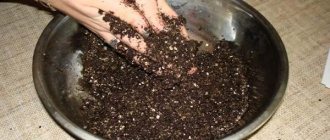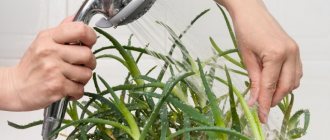- August 27, 2018
- Greens and herbs
- Michael
Probably, almost every reader who at least sometimes gets out into the forest has seen sphagnum - moss covering the soil in damp areas. Experienced people try to remember such places so that, if necessary, they can come there for a valuable plant. However, not everyone knows what it looks like and what it is needed for. Let's try to eliminate this gap in education.
What does he look like
Now it’s worth telling what moss looks like - in case the reader decides to stock it for future use.
Outwardly, it is very inconspicuous - a thin green stalk coming from the root, slightly branching upward. Covered with tiny leaves that wrap around it in a spiral. An interesting feature: sphagnum moss has no roots. What inexperienced pickers think is a root is actually a dead part. After all, sphagnum is a perennial plant. It freezes in the winter and continues to grow in the spring. Moreover, only the upper part grows - the lower part gradually dies, rots, and turns into peat.
It grows quite densely, mainly in damp places. Therefore, only the upper part receives enough light for development. In the lower part, located in the shade, and often in water, chlorophyll is gradually destroyed. Because of this, the plant turns from green to white. And the rotting part is brown.
Reproduction of sphagnum moss, like other mosses, occurs through spores. Sex cells mature on the stem, in which spores appear. When they are ripe enough, the sac bursts, and water and wind carry the tiny spores over a long distance.
origin of name
Many people are interested in why peat moss got its name. As mentioned above, this type of moss is involved in the formation of peat bogs. Sphagnum grows and decomposes at the same time. While the sphagnum stem annually grows upward by 10-20 cm in the upper above-water part, its lower underwater part gradually dies off and is converted into sphagnum peat, growing at a rate of up to 1 cm per year.
Sphagnum raised bogs
Due to the constant accumulation of peat, the surface of the bog in the upper layers slowly rises. In this way, so-called raised bogs are formed. There are no bogs in them, and the water level is 10-20 cm below the peat surface. That is why sphagnum is called peat moss.
Where does it grow
Surely many readers are interested in where sphagnum moss grows in Russia. It can be found in dense forests, mainly in the northern regions of the country. Favorite habitat is swamps, banks of streams, small lakes, and rivers with weak currents.
In general, it can grow on almost any surface - earth, clay, stone, even iron and glass! The main thing is that there is enough moisture and at least a little sunlight. It is very rare to see it in the steppes, again close to sources of moisture.
Areas of application
Not everyone knows that this amazing plant is used in a variety of areas of human activity: crop production, construction, breeding pets, even medicine and cosmetology!
Certain features of sphagnum moss make it truly irreplaceable.
To begin with, it easily allows air to pass through, while easily trapping or releasing moisture. According to experts, moss is capable of absorbing moisture, the volume of which is twenty times greater than its own! A real miracle of nature. Equally important, it has antiseptic properties. This is what makes it very popular in extreme medicine.
However, in order not to be unfounded, we will talk about its application in different areas in more detail.
Use in floriculture
Of course, sphagnum moss is most often used for indoor plants. It is almost impossible to list all the methods of application here. Let's talk at least about the main ones.
To begin with, germinate the seeds. There is no need to use a damp cloth, which has to be wetted in a warm and dry apartment 2-3 times a day. Just wrap the seeds in a piece of sphagnum moss, water them thoroughly, put them in a place where they will not be disturbed, and forget about them for a few days. First, the moss will absorb excess moisture, so the seeds will definitely not rot. And then, as they dry, it will release moisture, moisturizing the seeds and providing suitable conditions for germination.
The same effect can be used when caring for adult plants. Simply lay sphagnum moss in a thick layer on the soil in the pot - and you can water the flower several times less often than usual.
Also, such a solution allows us to solve the problem of infectious and bacteriological diseases. You can rest assured that a plant that comes into contact with this moss will definitely not become infected, and all thanks to the same antiseptic properties. Fungi and mold will also not cause the slightest problem.
At the same time, moss makes the soil where it grows softer and looser. Of course, this has a positive effect on the process of germination, rooting and further growth of ornamental flowers and shrubs.
Finally, it can always be crushed and mixed with soil. Quickly rotting, it turns into peat, which nourishes the plant with all the necessary substances. So sphagnum moss for indoor plants is a real gift, making life much easier for gardeners.
Beneficial features
Sphagnum is considered useful for indoor plants for three reasons:
- It has natural antibacterial properties. The element sphagnol included in its composition helps disinfect the soil. Soil containing sphagnum is less susceptible to mold and fungal diseases.
- Absorbs water well. Dry sphagnum moss can absorb moisture 20 times its own weight.
- Provides air access to the root system.
Sphagnum and medicine
Not everyone knows that during wars, many soldiers and officers survived serious wounds thanks to moss. There was not enough ordinary dressing material, and it was not always at hand. If it was not possible to disinfect the wound, a bunch of moss was simply placed on it, which was wrapped on top with any fabric - not always sterile. Sphagnum disinfected both the wound and the dressing material itself. The healing process went much faster, there were practically no cases of inflammation or decay of the wound. During the Great Patriotic War, special detachments of pioneers were even created to procure this valuable raw material. Many tons of this amazing plant were sent to the front, used instead of scarce medicines and saved many people from disability and death.
It is still used today. For example, putting a small amount of moss in your shoes will help you get rid of foot or nail fungus forever. And this is without purchasing expensive drugs, which often have questionable effectiveness and many side effects.
They also take baths with moss. To do this, add 100 grams of dried sphagnum to three liters of hot water. It is infused for half an hour, after which it is filtered and added to a warm bath. The optimal regimen is two procedures per week, each lasting 20 minutes. Such baths can ease arthritis, arthrosis, and also improve the removal of toxins from the body, increase sweating, and get rid of excess salt.
Plant structure
Sphagnum is a large plant, on average it can reach a height of 10-20 cm. At the top of the branch, boxes are formed, in which spores are later formed. Sphagnum are the only mosses that do not have rhizoids, so they absorb moisture through their stems and leaves. The stem includes three types of branches: protruding, pendulous and apical. A plant leaf consists of two cells: green (living) and dead. The former are responsible for photosynthesis, and the latter serve as a reservoir of moisture and air.
Inside, the body is made up of plant tissues with cells, the structure is formed by connecting green cells to each other. Due to its structure, this type of sphagnum moss has the ability to absorb large amounts of water. When saturated with moisture, the peat perennial acquires a light green tint, and when completely dry it turns white.
Taking care of snails
Sphagnum is also well known to many lovers of land snails. Moreover, it allows you to solve a whole range of problems at once. And this despite the fact that the question of how to use sphagnum moss for snails does not even arise: just put a bunch in a terrarium with sufficient humidity, and you can forget about it.
The moss will grow quickly and maintain an optimal level of humidity. Sphagnum is also quite attractive: the rich green stems enliven the terrarium and make it more beautiful.
Snails rarely suffer from infectious diseases. But if they live in a terrarium with moss, then the likelihood of disease is completely excluded - an additional plus for snail lovers.
In addition, moss can serve as an excellent addition to your pets' diet. Under suitable conditions, it grows quickly, and no matter how quickly the snails eat it, they will not cause serious harm, not to mention the complete destruction of a kind of living lawn.
At the same time, it allows you to monitor the humidity level, playing the role of a kind of indicator. If the stems are green, everything is fine. But if the leaves begin to turn yellow, it means that the air in the terrarium is very dry, it is worth adding a little water so that both the moss and the snails feel quite comfortable.
Video
The controversial opinion regarding the use of sphagnum mosses when growing orchids confuses many beginners - what is it for and, if needed, how to use it and where to put it.
The fact is that some gardeners associate its use with diseases of the delicate and demanding exotic tropical pet.
To determine this, you need to understand the biological benefits and harms of this substrate component . After all, its incorrect use can lead to sad consequences for the flower.
Growing moss
This procedure is so simple that even a small child can easily cope with it. First of all, you need to get at least a small bunch of sphagnum somewhere. This can be done in a store, via the Internet, or best of all, get out into the forest and collect a small amount of the plant in its natural habitat.
In the latter case, it should be washed. The procedure is very simple: soak in warm water (preferably from a filter or settled water to remove chlorine) and leave for several hours. From time to time, come up, turn it over, carefully, so as not to damage the stems, shake the stems. During this time, any debris, soil, sand, insects and worms will end up at the bottom. All that remains is to carefully remove the plant and rinse off the contaminated water.
After this, the cultivation of sphagnum moss begins. Place it in a suitable container - a small aquarium or even a simple three-liter jar is perfect. Add a small amount of water and leave in a warm, sunny place. Moss is not too afraid of excess sun, but in this case the amount of moisture should be increased in order to prevent drying out. You can seal the container, thus creating a small closed ecosystem. Or you can just add water from time to time.
There probably won’t be any problems when growing: the moss will release oxygen in the light. Carbon dioxide is released in the dark and also as a result of rotting of the lower part. Sunlight and sufficient moisture complete the list of everything necessary for the successful development of a plant.
Secrets of success
Properly planted moss is a problem-free pet and does not require special care - it needs to be watered rarely, wintering is not necessary (even for local species), and it is not picky about temperature conditions (it will not suffer from winter ventilation). However, three main conditions for successfully growing forest mosses in an apartment will still have to be met:
"Soft" water
The lower the mineralization, the better. Ideally, water for watering moss should be distilled. In hard water, most forest ground mosses do not grow, but gradually degrade. Tap water, boiled water, water after settling or filtering is not suitable. In principle, rainwater is suitable, but in urban environments it contains too many foreign impurities. The simplest thing is to use distilled water for irrigation. The distillate can be purchased at an auto supply store, it is inexpensive, and is consumed slowly - a one and a half liter bottle for one small florarium with moss will last about a year.
Closed florarium
You can use a glass jar or glass as a florarium for moss.
Any container with transparent walls is suitable as a florarium, the main thing is that it has a tight-fitting lid. Instead of a lid (or simultaneously with it for better waterproofing), you can use cling film - this is not a very aesthetic, but quite functional solution.
For normal growth in closed ground conditions, mosses need consistently high humidity. They do not need ventilation and do not tolerate drying out well, even those species that naturally grow in relatively dry places. Three years ago, as an experiment, I opened one of my jars of sphagnum moss. The moss in this jar died very quickly, despite regular watering, and never recovered. I still have this same species growing in a closed jar. If you want your moss to really live and grow, you will have to look first of all at the functionality of the florarium and neglect many popular interior solutions. Not suitable: hanging florariums with a side hole that cannot be closed, florariums - “greenhouses” with a door, any containers that have gaps between their parts.
How to harvest moss
When you go into the forest, collect enough moss. It is advisable to do this near streams or on heavily moist soil, in the shade of trees - these are the most comfortable conditions, which means the sphagnum will be of the highest quality.
There are two ways to collect. Firstly, just pick it and put it in a suitable bag or bag along with the “roots”. In this case, the collection process goes faster, and peat fertilizer, if you are interested in it, will form faster. But the volume of healthy, living moss will be reduced. Secondly, you can use ordinary scissors, cutting off the top layer of moss - only the green one, leaving the white one on the ground. Then even a small bag will fit a large amount of plant that will grow well.
Procurement rules
In our country, sphagnum grows in huge quantities in the nearby pine-spruce forest, especially in damp lowlands. If there is a swamp not far from you, then there will definitely be sphagnum around it. It is better to collect in the fall, in bags.
There is no need to pull out all the moss; just carefully cut off the green top part with scissors. Be sure to leave separate young shoots so that the plant can continue to grow after your visit.
The collected sphagnum moss is scalded with boiling water and laid out in an even layer in well-ventilated sunny areas. Dried plants are placed in linen bags or paper bags for later storage.
Preparation for storage
Further procedures depend on your goals. Are you interested in dry sphagnum moss used for medicinal purposes? Then you should hang it - on a strong thread, cord or in any other way. As a last resort, you can spread it out on a newspaper folded in several layers and leave it in the sun. But with this method, it is advisable to make the layer as thin as possible and mix the moss regularly. Otherwise, it will dry out on the outside, forming a crust, and moisture will remain inside, which will make long-term storage impossible - mold will appear or the sphagnum will simply rot.
But if you would like to keep it alive for as long as possible, you can simply put the moss in a paper bag and stick it in the freezer. Here he will lie freely for several months, or even years. Once removed, place it in a warm, damp place. In a few hours it will thaw, and after a few days it will begin to grow. But keep in mind: the longer the sphagnum is stored frozen, the more stems will die. They should be removed as soon as it is clear that they are not viable.











